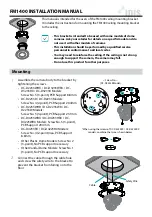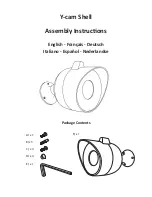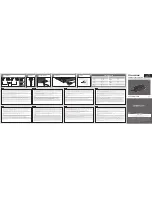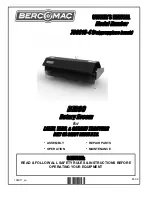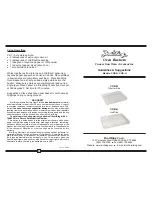
Battery Maintenance
2240 SRM 1
Battery Ratings
The ratings of batteries are measured in ampere-
hours and kilowatt-hours at a constant rate of dis-
charge. A rating of 6 hours is the standard. Ampere-
hours is the measurement of battery capacity. To
calculate ampere-hours, multiply amperes by hours.
See Table 1. For example, 5 amperes times 5 hours
is 25 ampere-hours. You cannot change the potential
difference of a cell. You can increase the ampere-hour
rating by increasing the number of plates in a cell,
or by installation of larger plates. The constant rate
of discharging can be compared to a measurement of
the battery capacity and ampere-hours. For exam-
ple, a battery with a rating of 600 ampere-hours dur-
ing a work period of 6 hours will generate 100 am-
peres per hour for 6 hours. The same battery cannot
generate 300 amperes for 2 hours. The heat gener-
ated within the battery will damage the battery.
Table 1. Battery Capacity Terms
Amperes × Hours = Ampere-Hours
600 Ampere Hours = 100 Amperes for 6 Hours
Volts × Amperes × Hours/1000 = Kilowatt-Hours
(KWH)
KILOWATT-HOURS
A kilowatt is 1000 watts. A watt is a measure of
electric power. The capacity in kilowatt-hours is the
total power generated by the battery. Watt-hours
are measured by multiplying the voltage by ampere-
hours. To measure the kilowatt-hours, divide the
watt-hours by 1000.
volts × amperes × hours
1000
= kilowatt-hours or kWh
To calculate the kilowatt-hours for a battery that has
a rating of 600 ampere-hours and a 48-volt system,
use this formula:
48 volts × 600 amperes × hours
1000
= 28.8 kWh
The watt-hours can be converted to kilowatt-hours
to indicate the battery needed for the operation. Al-
ways select the correct type of battery. Remember,
a battery that has a rating of 300 ampere-hours will
not do the same job as a battery that has a rating of
600 ampere-hours. Do not permit the specific gravity
to go below the limits shown in the manual.
Battery Maintenance
Battery maintenance must include the following
items:
• A good battery charger
• A clean battery
• Keep the electrolyte at the correct level (see Fig-
ure 13)
• Keep a record of the battery
• An Equalization Charge once a month
SAFETY PROCEDURES
1.
Wear a rubber apron, gloves, boots, and goggles
or a face shield when doing maintenance on bat-
teries.
2.
Batteries generate hydrogen gas when they are
being charged. Keep open fire away from bat-
teries. Do not check the electrolyte level with a
match or a lighter. Do not smoke and do not cre-
ate sparks.
3.
Lift batteries correctly with a crane or equipment
designed for the job. Always use a spreader bar
designed and adjusted for the battery. Move bat-
teries with a lift truck or a conveyor or rollers de-
signed for that purpose. If the battery does not
have a cover, a rubber mat or insulating material
must be put over the top of the battery to prevent
a short circuit with other equipment. Make sure
the lifting equipment has enough capacity for the
job. Do not use chain or wire rope slings.
4.
Never put metal materials or tools on a battery.
5.
Disconnect battery from lift truck before doing
maintenance or repairs.
6























